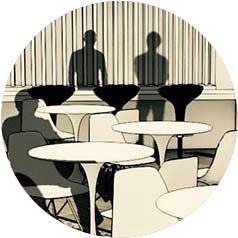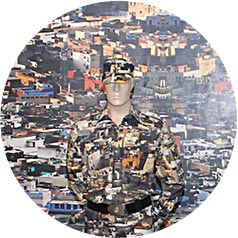Why so serious?
How many jokes on Sardars are there?” quizzed a gentlemen of very definite Sikh antecedents. “Perhaps a million,” I replied irreverently. “No, only four! The rest are all true incidents,” he retorted with cheeky glee. The political incorrectness of the raucous laughter that ensued would certainly have been branded blasphemous by Mamatadi as she rises as the champion of the serious, somber and grave.
What happened to the ability to laugh at ourselves? While acronyms like LOL and ROFL invade language, and emoticons and smileys replace verbal expressions, our cities are firmly rooted in the dour. Seemingly designed by the grim (with monochromatic shades of graphite) they appear more a bleak tragedy of architecture than soaked in the gamut of colour that personifies Indianness. Are there any facades in the city that crack into smiles, do its parks spurt a giggle or its streets bend into a smirk?
But why not? Why cannot glimmers of fun find place in urban India? Why can’t we line some of our pavements with funny mirrors, place a swing in a bus shelter, use signage to liven up dreary subways, allow fountains to splash onto plazas or let construction material and scaffoldings turn into public art? In instilling building and urban planning with deeper meaning, we have ignored the simpler act of whimsy. Architects are supposed to be inspired by the poetic, but they have excluded the odd limerick from modern Indian architecture. Thus, they remain an assault of steel, glass and cheap metallic panels, driven by commerce into spaces that lack the buffer of fun. The sole purpose of architecture cannot be “work” — to accommodate and to make functional. We know what all work and no play did to Jack — then why do the same to our cityscapes?
Architecture needs to engage with its audience in a manner that is human. If, as Francis Bacon has said, “Imagination is given to man to compensate for what he is not; a sense of humour to console him for what he is”, then Indian architecture too needs a “sixth sense”, that of humour, to accompany its obligations to the five senses. It needs to tease its spectators into entering its portals and to create an aspect of fancy in its forms so as to extract an occasional chortle and grin. Take the architecture of Frank Gehry or Zaha Hadid. Their buildings, in scrunched and slapstick shapes like a pair of binoculars, a fish or a fluid UFO wrapped in random ribbons, all break from the protocol of the sober. Antoni Gaudi’s castles in the sky rarely fail to evoke a dream. In the same genre is our own Samira Rathod, who reinvents the ordinary with forms, materials and elements that bring out the explorative child in users of her buildings.
Indian cities are of ambiguous age, where the old and the young are juxtaposed and everything is growing at an unprecedented speed. Here, unfortunately, maturity means one foot in the grave. But our cities have forgotten to connect with the inner child. Urban planners need to create points that de-stress the already taut city, to break its tensions with places, nodes or transport hubs that surprise and allow one to let one’s hair down. The design of our cities must then include a wit, a sense of repartee and jest. Else our cities will always be skewed towards the rational and not towards completeness.
— Suparna Bhalla
Published on April, 21st 2012




























